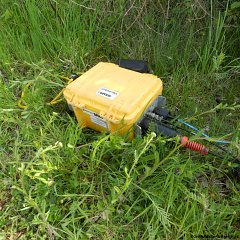Seismic Exploration Systems
Shallow Seismic Refraction
In Shallow Seismic Refraction surveys, the primary focus is on examining low and high-velocity layers down to the basement rock. This technique allows for the identification and mapping of tectonic features and changes in material properties. The survey also investigates the features within the overlying sedimentary layers, providing valuable insights into subsurface conditions. It is especially useful for understanding the depth and structure of these layers, as well as the characteristics of underlying rock formations.
Shallow Seismic Reflection
Shallow Seismic Reflection surveys are gaining popularity for shallow subsurface studies due to the significant advancements in the dynamic range of modern seismographs. This method uses reflected seismic waves to provide detailed images of subsurface structures. To achieve the best results, reflection surveys require:
MASW (Multi-Channel Acquisition of Surface Waves)
MASW is a technique used to determine engineering moduli by measuring surface or Rayleigh waves. This method is relatively simple and cost-effective, requiring only an impulsive energy source (such as a hammer or a PEG-40) and a standard Geode system equipped with 4.5 Hz geophones. MASW can be performed quickly in the field with either 1D or 2D measurements to analyze the shear-wave velocity profile of the subsurface.
For deeper investigations, passive MASW can be performed by recording background noise from traffic or construction as the energy source. These vibrations, typically lower in frequency, allow for the investigation of greater depths. The resulting shear-wave profile provides insight into deeper subsurface conditions. Combining active source measurements with passive measurements allows for a more comprehensive shear-wave profile of the subsurface, enhancing the understanding of both shallow and deeper geotechnical conditions.
Each of these techniques offers distinct advantages depending on the survey objectives, whether investigating shallow subsurface layers, identifying structural features, or assessing soil stiffness for engineering applications.









